What Do Dogs Dream About When They Cry? [Secrets]
Have you ever wondered what goes on in your dog’s mind when they’re snoozing and suddenly let out a cry? It’s a question that has intrigued dog owners and researchers alike.
As man’s best friend, it’s only natural to want to understand more about our canine companions’ emotional and cognitive development, especially when it comes to their dreams and what can possibly trigger those cries.

Dreaming is a normal part of sleep for both humans and animals, and like us, dogs experience cycles of wakefulness, Rapid Eye Movement (REM) sleep, and non-rapid-eye-movement sleep. It’s during REM sleep that dogs, and humans, are likely to have vivid dreams. So, when your dog cry-whimpers during their sleep, it might be an indication that they’re dreaming about something that’s causing them fear, distress, or even pain.
In addition to exploring the possible reasons behind your dog’s sleep crying, we will also consider ways to support their dream life and overall well-being. With expert insights and practical tips at hand, unlocking the mystery of canine dreams and cries can help strengthen the bond between you and your furry friend.
Understanding Dog Dreams
Rapid Eye Movement (REM) Sleep
Rapid Eye Movement (REM) sleep is a phase of sleep when humans and animals alike experience vivid dreams. Just like humans, dogs undergo REM sleep, which is when they’re most likely to dream. You’ll notice their eyes moving behind closed lids, signaling they’re in deep sleep.

Rapid eye movements, occasional twitching, and irregular breathing are all signs of a dog dreaming. These unconscious twitches can sometimes be amusing, but they’re part of our furry friend’s sleeping experience.
Brain Activity
During sleep, our dogs’ brains continue to work hard, as is the case with humans. When researchers examined brain activities in rats using electrodes, they discovered a similarity between humans and animals in their dreams. This has led experts to believe that dogs may also dream about their day-to-day experiences.
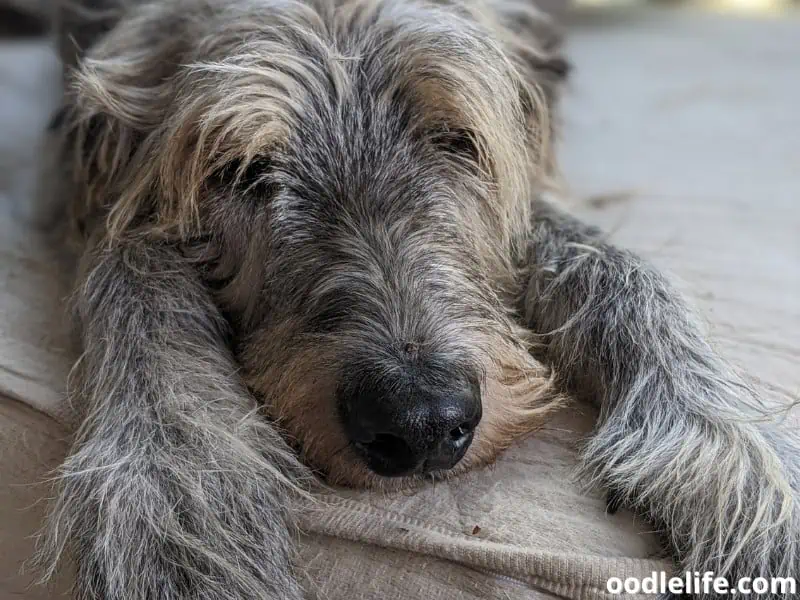
Your pup may be dreaming about the fun romp they had at the dog park or even the frightening encounter with the mailman. Just like us, their dreams can be a mixed bag of memories and emotions.
Sleep Cycles
Dogs go through several sleep cycles, including the slow-wave cycle and the REM phase. The slow-wave cycle is when a dog drifts off to sleep, with their conscious brain still partially active. This is the initial phase where your dog gets comfortable for a cozy nap.
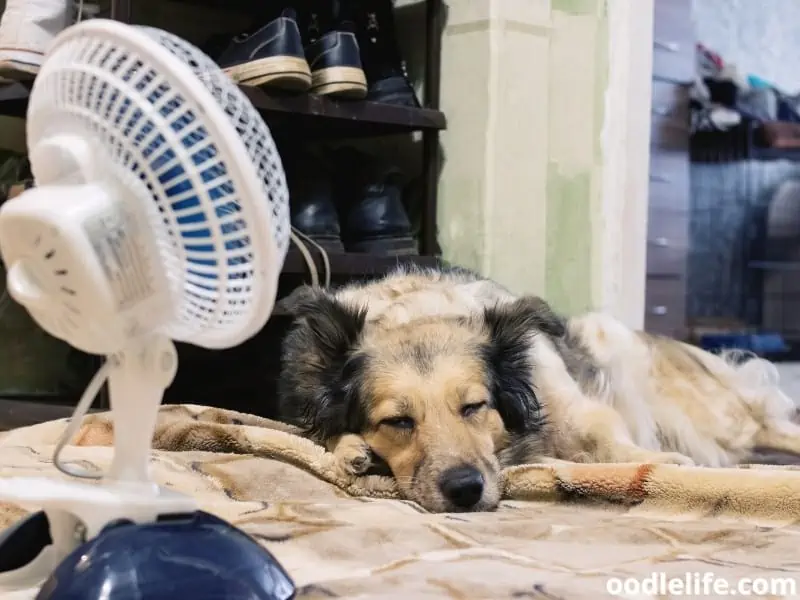
However, the most exciting part is when they enter the REM phase, as that’s when the real magic happens in their dreams!
During the REM phase, dogs might cry or whimper in their sleep, which could be a sign of dreaming about something distressing or scary. If your dog has experienced a recent traumatic or painful event, they could be dreaming about that very incident. It’s essential to be aware of these signs to help them feel comfortable and provide the love and care they deserve.
So, the next time you see your doggo twitching and dreaming during their nap, give them a gentle pat of reassurance, and let them know it’s just another day in their doggy dream world. They’ll appreciate the affection, as all their dreams can’t always be filled with chasing squirrels and belly rubs.
What Do Dogs Dream About?
Common Scenarios
Dogs, just like humans, experience dreams during the REM (Rapid Eye Movement) stage of sleep. Their dreams may vary based on their personal experiences, memories, and emotions. It’s common for dogs to dream about familiar scenarios, such as playing with their favorite toy, chasing squirrels, or engaging in a thrilling game of fetch.
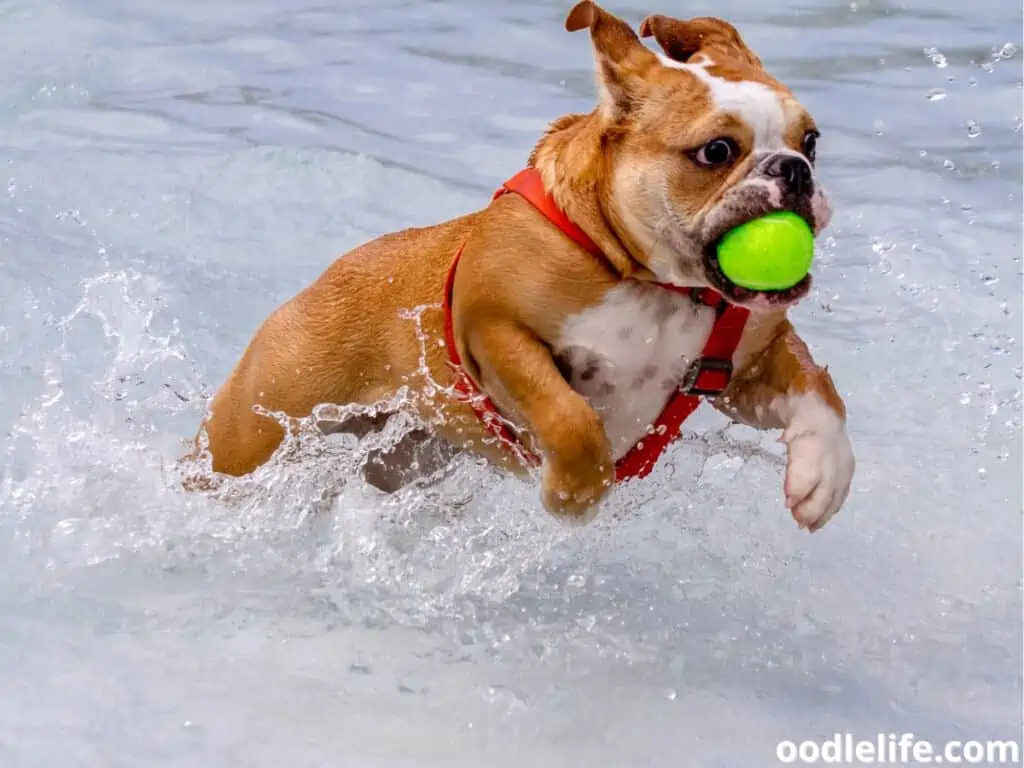
Sometimes, dogs might cry or whimper while dreaming, which could be indicative of a distressing or scary experience. For instance, if your dog has recently encountered a larger dog that intimidated them, they might be re-living that moment in their dreams, leading to tears or whimpers. On a lighter note, their dreams might simply involve something they’re excited about, like a delicious treat, causing them to vocalize their enthusiasm in their sleep!
It’s worth noting that some dogs might even engage in sleep “paddling” or leg twitching, which could be a sign that they’re dreaming about running or playing.
Breed-Specific Dreams
Different dog breeds might have specific behaviors or tendencies that correlate with their dreams. For example, retrievers might dream about swimming in search of a toy or sporting activity, while a herding breed like a Border Collie may envision themselves skillfully managing a flock of sheep.
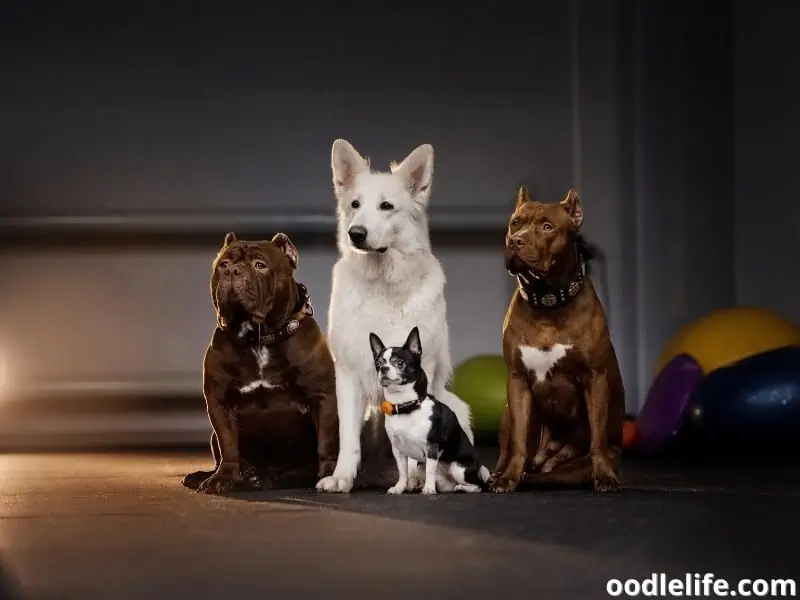
Of course, this doesn’t mean that a Chihuahua couldn’t dream of herding sheep, as dreams can certainly vary based on an individual dog’s experiences and personality. However, it is likely that breed-specific traits and daily activities influence the content of a dog’s dream to some extent.
Why Dogs Cry in Their Sleep?
Dogs, like humans, can experience a range of emotions while sleeping. They might cry, growl, or bark depending on what’s happening in their doggy dreams. Let’s explore several reasons why dogs might cry in their sleep.

Dreaming: Dogs, believe it or not, have dreams just like we do. In their dreams, they might be chasing squirrels, playing fetch, or accidentally digging up your favorite flowers. Sometimes the emotions in their dreams can prompt dogs to cry, whine, or even bark. So, if you hear your dog crying in their sleep, they might just be having an intense squirrel-chasing dream!
Pain: If your dog is in pain or feeling discomfort, they might cry out in their sleep. This could be due to an internal injury, inflammation, or an infection that is hard to notice. If you suspect pain might be the cause of your dog’s tears, a visit to the vet is in order.
Anxiety: Dogs can experience anxiety just like humans. Life can be ruff, after all! Things like separation anxiety, fear of loud noises, or new environments can create anxious feelings for your furry friend.
Crying in their sleep might be an expression of this anxiety. So, even though your dog can’t tell you they’re feeling anxious, their sleep behavior can sometimes give you a clue.
Normal puppy behavior: Puppies sometimes cry in their sleep as a normal part of their development. You know how babies can be fussy sleepers? The same goes for puppy snoozes.
Growing up is hard work, and sometimes it involves a little late-night whining.
Remember, dogs are complex creatures with a wide range of emotions. If you’re worried about your canine companion’s nocturnal tears, a chat with your vet can help ease your concerns and ensure your dog is healthy and happy. So, pay attention to Fido’s nighttime noises, and rest assured, you’re not the only one trying to decode the mysterious world of dog dreams!
Nightmares and Anxiety in Dogs
Stress-Related Dreams
Dogs, like humans, can experience stress-related dreams. Their day-to-day experiences often shape the content of their dreams. A dog having a nightmare may be dreaming about something they don’t like or even something that gives them anxiety.
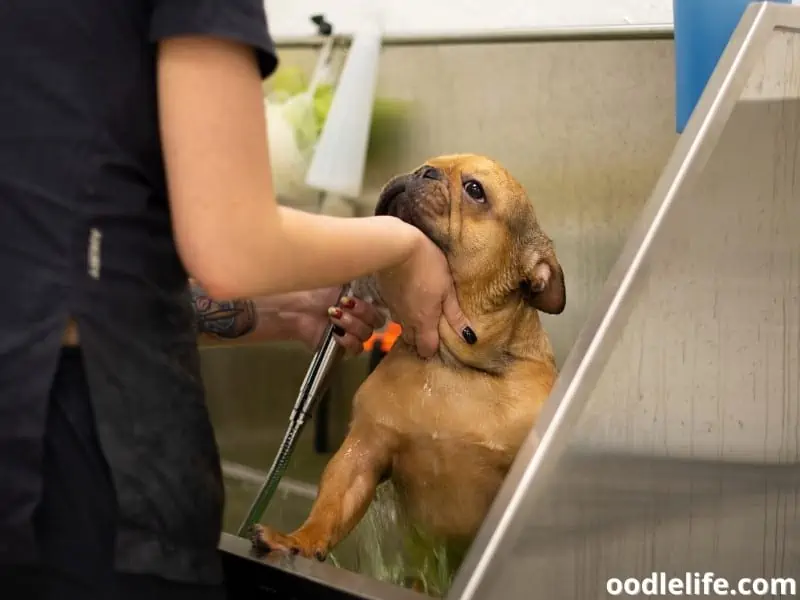
Common situations that cause stress for dogs include nail trims, grooming, and vet visits.
In their dreams, dogs’ pons control the sleep cycles and regulate deep sleep. If a dog cries during their dreams and their pons malfunctions, they may stand up and act out whatever it is they’re crying about.
Fear Induced Nightmares
Dogs may have nightmares about anything that scares or stresses them. Common triggers for fear-induced nightmares include loud noises, unfamiliar environments, and being left alone. It’s essential to keep an eye on your dog and ensure that they feel safe and secure in their surroundings.
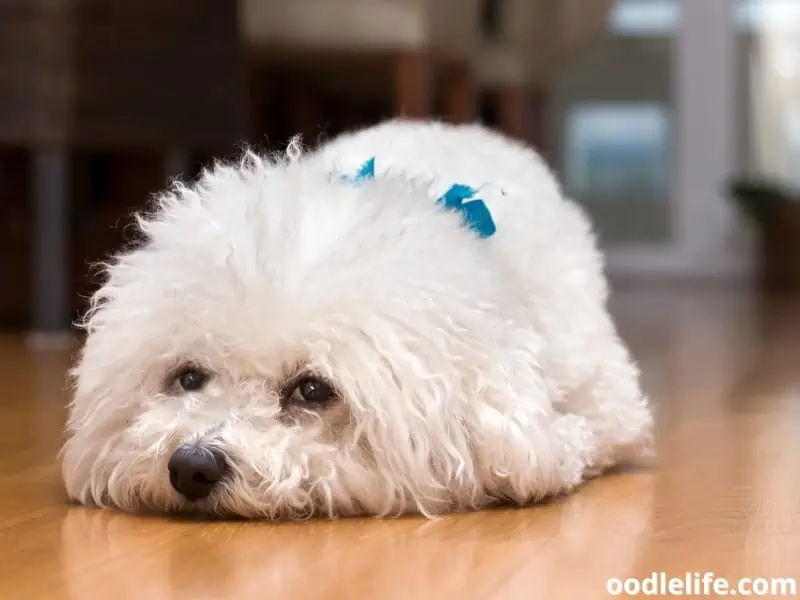
Here are some tips to help prevent your dog’s nightmares:
- Create a comfortable, safe, and quiet sleeping environment for your dog.
- Maintain a consistent routine for your dog, including regular walks and playtime.
- Provide your dog with positive experiences and socialization to reduce anxiety.
- Consult with a veterinarian about any changes or concerns related to your dog’s sleep behaviors.
Remember, it’s vital to keep an eye on your dog when they’re sleeping to ensure that they’re just dreaming, and not experiencing something more serious, like a seizure.
Physical Manifestations of Dreams
Twitching and Paddling
When dogs dream, their bodies often exhibit physical movements, such as twitching or paddling their paws. This is because their brains are sending signals to their muscles as they journey through the landscape of their dreams. For example, think of a dog chasing a ball in its sleep – its paws might twitch or paddle as if it were actually running.
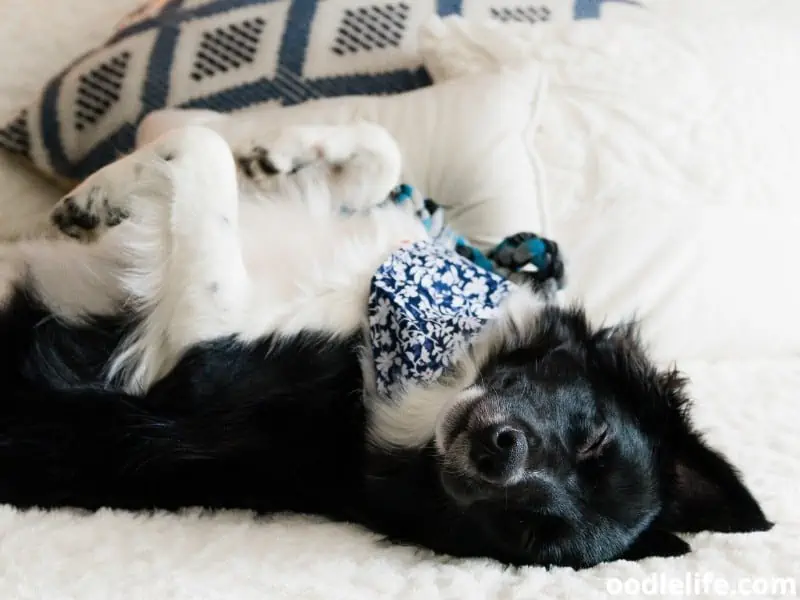
These movements are usually harmless and a sign that your dog is deep in dreamland. But remember, don’t wake a sleeping dog suddenly, as it may feel disoriented and scared.
Panting and Barking
In addition to paw movements, our canine friends may also show other signs during their dreams, such as panting or even barking. These vocalizations occur because the dog is experiencing strong emotions in their sleep, whether it’s excitement, fear, or something else entirely. Imagine if your dog is dreaming about protecting its home from an intruder – it may bark or whimper as if it were really in that situation.

But don’t worry, occasional dream barks or whimpers are just your dog’s way of expressing their dream experiences. There’s no need to panic and think your dog is having a seizure – just let them snore and bark the night away.
Disorientation
Sometimes, when dogs wake abruptly from their dreams, they may appear disoriented or groggy. This is due to the sudden shift from the dream world back to reality. If you’ve ever been startled awake from a vivid dream yourself, you can probably relate to this feeling!

If your dog appears disoriented after waking up from a dream, it’s essential to give them some time and space to gather their bearings. Some gentle reassurance and the knowledge that their favorite human is nearby should help them ease back into wakefulness.
In summary, dogs often display various physical manifestations during their dreams, such as twitching, paddling, panting, and barking. These behaviors are normal and just part of their nighttime adventures. Remember to let sleeping dogs lie, and always approach a waking dog with patience and understanding.
Keeping Dogs Comfortable During Sleep
Providing a Safe Sleep Environment
Creating a safe sleep environment for your dog is essential in helping them feel comfortable and relaxed while dreaming. Start by providing a cozy bed or sleeping mat that gives ample cushion and support. Also, make sure their resting area is free of clutter and potential hazards, like loose wires or small objects they could chew on.

Adding a favorite toy to their sleeping space can also help them feel more at ease and secure, especially if it’s a familiar or cherished item.
Exercise and Mental Stimulation
Ensuring your dog receives regular exercise and mental stimulation can significantly improve the quality of their sleep, reducing instances of crying during dreams. Try to maintain a consistent exercise routine involving daily walks, playtime, and even doggy sports like agility training. Additionally, engaging your dog in puzzle toys and brain games can help keep them mentally sharp and content.
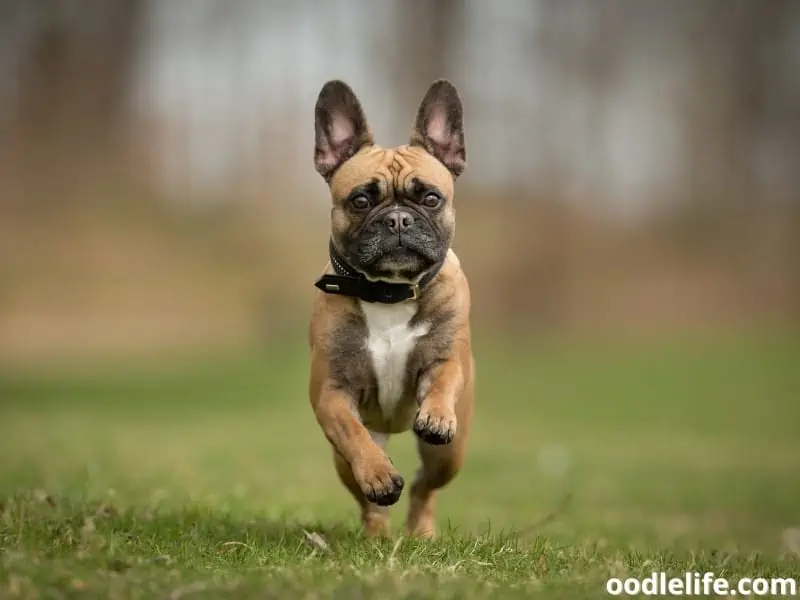
These activities not only tire out their body but also their mind, leading to a more restorative sleep.
Let Sleeping Dogs Lie
It’s crucial to avoid disturbing your dog while they’re asleep, especially when they cry during their dreams. As tempting as it might be to comfort their whimpering, waking a dog abruptly might cause them stress and confusion. Instead, allow them to process their dreams peacefully, and they’ll likely return to a calm state on their own.
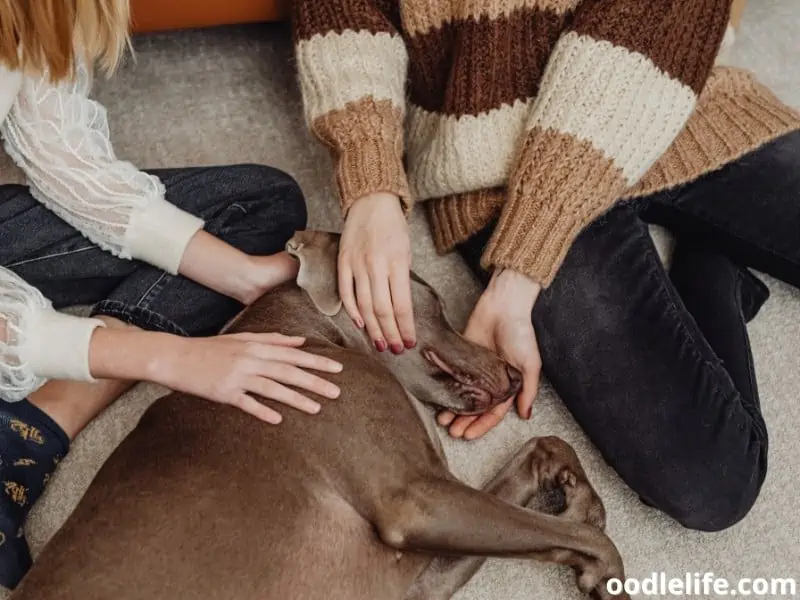
If you’re concerned about a potentially harmful dream, observe their behavior from a distance, and only intervene if they show signs of distress that last for an extended period.
Laughter is the best medicine, so remember to occasionally share a funny story about your dog’s sleep adventures with friends and family – after all, we’re all in this together when it comes to navigating the world of canine dreams.
When to Consult a Veterinarian?
Understanding the Signs of Distress
If you find yourself waking up to your dog crying in their sleep, you may be puzzled and concerned about what’s going on.

First, let’s discuss some possible reasons why dogs cry during sleep, such as:
- Seeking attention
- Experiencing pain
- Sleep deprivation
- Having a bad dream
When it comes to understanding your dog’s distress, it’s essential to observe and differentiate between normal sleep behaviors and signs that may indicate a more significant problem. You’ll want to consult a veterinarian if your dog exhibits the following symptoms:
- Persistent crying or whimpering
- Agitation during sleep
- Inability to settle down or rest comfortably
Addressing Sleep Disorders
Sleep disorders can occur in dogs, just like humans. If you notice your dog exhibiting odd sleeping habits, acting restless during sleep, or waking up suddenly startled, these could be indicators of an issue that requires veterinary attention. In such cases, it’s crucial to seek professional advice to understand better and potentially resolve the underlying cause.
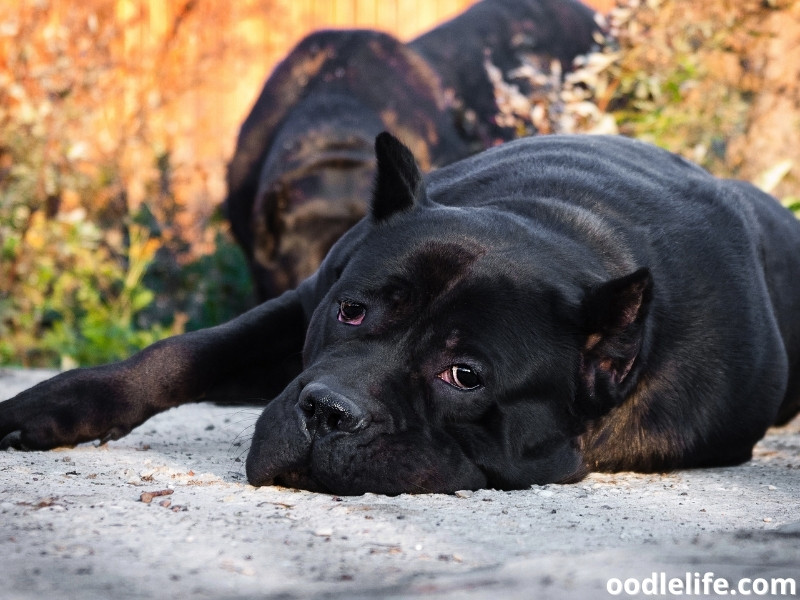
When visiting the veterinarian, here are a few things you can do to help them assess your dog’s sleep problems:
- Keep a sleep diary: Record your dog’s sleeping patterns, including when they sleep, how often they wake up crying, and if they’re reacting to specific stimuli.
- Note any recent changes: Observe if your dog’s sleep issues have started after a change in their environment, daily routine, or diet.
Your dog may be dreaming of running in a field or chasing squirrels, and the occasional cry might just be a regular part of their dream world. However, if you’re concerned that their crying is a sign of something more serious, don’t hesitate to consult with a trusted veterinarian. They’ll be able to help you determine if there’s an underlying issue and guide you in ensuring your furry friend gets a good night’s sleep.
Additional Factors Affecting Dog Dreams
When it comes to our furry friends and their slumbering minds, there are various factors that can influence the content and frequency of their dreams. Let’s explore some of these aspects and try to understand what might be happening when our dogs cry during their dreams.

Instincts play a major role in dog dreams. Our canine companions are hardwired with certain behaviors and responses that have helped their ancestors survive in the wild. That squirrel your dog chases in the park?
It’s a throwback to their hunting instincts! When they dream, they might be imagining a thrilling chase, even if it involves catching squirrels in your neighbor’s tree.
Past experiences are another significant factor that contributes to our pooches’ dreams. If your dog has had a recent traumatic or scary encounter, they might be replaying these events in their dreams, causing them to cry. (Poor puppy, even our fur children aren’t exempt from the horrors of bad dreams!)
Dog dreaming is closely linked to the REM phase of sleep. Our dogs are similar to us in this regard. During this phase, they have the most vivid and sometimes emotionally powerful dreams.
It’s like doggy dreaming in high definition! Their cries during sleep can be attributed to the emotional rollercoaster they experience during this intense REM phase. (Viewer discretion advised.)
Speaking of the REM phase, here are some factors that impact the frequency of our dogs’ dreams:
- Dog Age: Young puppies experience dreams more frequently than older dogs, as they are constantly learning and storing new information. (Doggy colleges, anyone?)
- Dog Size: Research shows that smaller dogs might dream more often compared to their larger counterparts. Talk about a small but agile dreamer!
- Dog’s Activity Level: A dog’s daily activity level may influence the intensity and frequency of their dreams. (No wonder your pup sings in their sleep after a day-long playdate at the dog park!)
As you can see, many factors contribute to our furry buddies’ dreams, helping us understand why they might cry during slumber. Though we may not be fluent in “dog dreaming,” we can surely appreciate the complexity and depth of our dogs’ emotional and mental activities while snoozing. So next time they whine in their sleep, just remember, they might be hunting squirrels – or facing something scarier than bath time!
Resources
YouTube Channels
If you’re curious about what dogs dream about when they cry, there are several YouTube channels that can help you understand this behavior. For instance, channels such as The Dodo and AnimalWonders Montana offer a range of videos showcasing dogs’ behaviors and emotions, including sleep behaviors.
Another great resource is Zak George’s Dog Training Revolution. This channel covers various aspects of dog training, care, and well-being. While watching, you might even catch a glimpse of a snoozing pooch experiencing some REM sleep.
Animal Rescue Organizations
Animal rescue organizations, such as the ASPCA and The Humane Society, also have plenty of resources on canine behaviors. These organizations frequently work with dogs with varying backgrounds and situations, making them experts in understanding our furry friends. As you browse through their websites, you might find tidbits about dog dreams and coping methods for when they cry during sleep.
For example, the ASPCA offers a complete guide to canine body language that could help you decipher whether your dog’s whimpering during sleep is due to dreaming or something else. Meanwhile, The Humane Society provides tips for crate training, which might be helpful if your dog’s crying is related to their crate or sleeping environment.
When it comes to understanding what dogs dream about when they cry, numerous YouTube channels and animal rescue organizations serve as fantastic resources. By exploring these options, you can gain a deeper understanding of your dog’s sleep behavior and help keep their nighttime dreams as peaceful as possible.